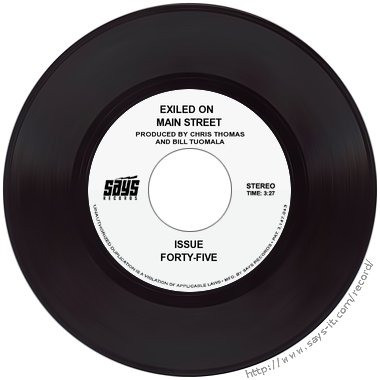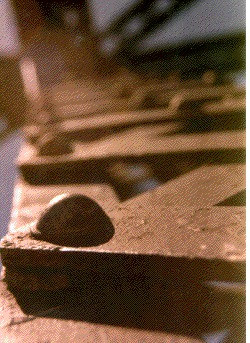Copy Link
Add to Bookmark
Report
Mead Lovers Digest #0530

Subject: Mead Lover's Digest #530, 22 January 1997
From: mead-request@talisman.com
Mead Lover's Digest #530 22 January 1997
Forum for Discussion of Mead Making and Consuming
Dick Dunn, Digest Janitor
Contents:
Preparations... (Joel Baker)
using a kraeusen to prime (Thomas G. Moore)
Re: Crystalization, Basswood (Olson)
juice concentraites ("Greg Parsons A.K.A. Rat")
Almond Mead/Meth/Mel? (Peter Miller)
Re:Crystalized honey/cloudy mead/malo-lactic ferment (Peter Miller)
RE: Vegemite? (DuG)
Clarifying Meads ("Brander Roullett (Volt Computer)")
Re: Mead Lover's Digest #511, 19 November 1996 (mwbell@pta6000.pld.com)
long chain proteins (Chuck Wettergreen)
blow-off hose? (JOSEPH GREENE)
coconut mead ("Evan J. Williams")
NOTE: Digest only appears when there is enough material to send one.
Send ONLY articles for the digest to mead@talisman.com.
Use mead-request@talisman.com for [un]subscribe/admin requests. When
subscribing, please include name and email address in body of message.
Digest archives and FAQ are available for anonymous ftp at ftp.stanford.edu
in pub/clubs/homebrew/mead.
----------------------------------------------------------------------
Subject: Preparations...
From: Joel Baker <lucifer@lightbearer.com>
Date: Sat, 18 Jan 1997 13:51:45 -0600 (CST)
Having once again gained access to enough space to store carboys undisturbed
long enough to make a batch of mead (one of the notable disadvantages of a
rather roaming lifestyle being the lack of this...), I am looking at doing
a couple of batches in the near future. One of the things I noticed discussed
that caught my eye while looking through the archives and on the net was an
"alternate" method of removing undesirable microorganisms from the must before
pitching the yeast, using Camden(sp?) tablets. Since I have something of an
aversion to working with very hot liquids (I'll do it, I don't *like* doing
it much at all...), I was wondering if anyone had comments on the quality of
things made by this method, or cautions about it's use?
******************************************************************************
Joel Baker System Administrator - lightbearer.com
lucifer@lightbearer.com http://www.lightbearer.com/~lucifer
The proof of the existance of truth is left as an excercise to the reader.
------------------------------
Subject: using a kraeusen to prime
From: cm199@cleveland.Freenet.Edu (Thomas G. Moore)
Date: Sat, 18 Jan 1997 17:05:43 -0500 (EST)
I am interested in using a kraeusen to prime my next mead. I
have had trouble getting enough carbonation in the bottle using
corn sugar or honey primers even after years in the bottle.
I am thinking of fermenting 1 lb. of honey and add that to my
mead, cap it and hope it works. The mead has some residual sugar.
Will this give me good carbonation?
- --
Will work for homebrew.
- --
Thomas G. Moore
cm199@cleveland.freenet.edu
------------------------------
Subject: Re: Crystalization, Basswood
From: olson99@mack.Rt66.com (Olson)
Date: Sat, 18 Jan 1997 15:38:20 -0700
I would like to add my 2 cents worth about crystalized honey.
I've been using both liquid and crystalized honey for more than 10 years
and have not seen any differences in the resulting mead.
Some of our local dessert honey has lots of pollen in it and crystalizes
very quickly at room temperature. Different honeys have different mixes
of different sugars and will crystalize at varying rates and temperatures.
Honey that has been "stretched" with sugar water, ie., adulterated, usually
will not crystalize at all.
In order to gently warm a honey to keep it from crystalizing, some people
put their gallons of honey on top of their hot water heaters. A local
grocery store with bulk honey has a light bulb under each five gallon
container so the the honey flows faster. I prefer to leave honey at
room temperature until I need it.
Re: Basswood honey. Last summer I was at a farmer's market in Minneapolis
and bought both local clover/alfalfa and clover/basswood honeys from Minn.
and Wisconsin. They have been combined with 8 pounds of New Mexico cherries
and so far the results are delicious! I liked the aroma of the basswood
when I bought it. Now that it has been mixed with other stuff it is adding
a nice complexity. If you make a traditional mead dominated by basswood,
please let us know how it turns out.
Happy fermentations,
Gordon
==========================================================
| Gordon L. Olson | U.S. Postal Service: |
| e-mail: olson99@mack.Rt66.com | 1632 Camino Uva |
| phone: 505-662-0705 | Los Alamos, NM 87545 USA |
==========================================================
------------------------------
Subject: juice concentraites
From: "Greg Parsons A.K.A. Rat" <gregp@mis.net>
Date: Sun, 19 Jan 1997 14:50:43 -0500
Hi gang,
Time to stop lurking and post a question. Looking at the labels on juice
concentrates, it doesn't show preservatives... so I am wondering... what is
wrong with using them for a pyment? any ideas out there?
Greg
- ------------------------------------------------------------------------------
-
| Greg Parsons KE4OOO gregp@mis.net gregp@lfucg.com |
| AMI #865 Who has the coffee? |
| NRA Life, SCCA SCA DOD http://www.stdio.com/~gregp http://www.lfucg.com |
- ------------------------------------------------------------------------------
-
------------------------------
Subject: Almond Mead/Meth/Mel?
From: Peter Miller <ocean@mpx.com.au>
Date: Mon, 20 Jan 97 09:04:50 -0000
I have a recipe for an almond wine (using mostly almonds and raisins as a
base) that I was thinking of fermenting with honey as opposed to the
sugar suggested. Anyone have any experience of concocting a mead with
almonds?
(And what _do_ you call a mead made with nuts? I guess it's really a
metheglin?..)
Peter.
------ < ocean@mpx.com.au > -----
Perpetual Ocean Music & Sound Design
http://www.mpx.com.au/~ocean/
------------------------------
Subject: Re:Crystalized honey/cloudy mead/malo-lactic ferment
From: Peter Miller <ocean@mpx.com.au>
Date: Mon, 20 Jan 97 09:04:48 -0000
>From: iaciofano@leds.enet.qntm.com (Ed, Quantum PE (508) 770-2251)
>Date: Thu, 16 Jan 1997 12:30:15 -0500
>
>The
>fact that the mead was cloudy, fell clear and had a brown sediment leads
>me to believe that what happened was proteins in the mead chained together
>and sedimented. This would not cause airlock activity. The longer chain
>proteins (I hope I have this correct, I'm open to other opinions) tend to
>give body to the mouthfeel. You mention the flavor as being "full and
>rich".
>Is there also an increase in smoothness and body to the mouthfeel? I've had
>proteins precipitate out of meads, both in the bottle and carboy. The
>resulting sediment looked dark brown (about the color of medium amber maple
>syrup) and rather wispy, like cotton balls or lint. Sounds yummy eh?
>The rest of the mead was brilliantly clear.
I've had that happen a couple of times and I had speculated some kind of
protein sediment but couldn't find anything in print about it. The
resulting mead was of a superior quality and very bright. For me it's
only happened in meads that had been aging for a longish time (in excess
of two or three years) and once in a straight fruit wine.
Question though: if the proteins have sedimented and then dropped out of
solution, how do they contribute to the mouthfeel? Or is it the _lack_ of
long proteins that have the beneficial effect?
In ignorance,
Peter.
------ < ocean@mpx.com.au > -----
Perpetual Ocean Music & Sound Design
http://www.mpx.com.au/~ocean/
------------------------------
Subject: RE: Vegemite?
From: dbeattie@postoffice.newnham.utas.edu.au (DuG)
Date: Mon, 20 Jan 1997 13:41:13 +1000
>Vegemite (concentrated yeast extract)
>Ingredients: Yeast Extract, Salt, Mineral
>Salt (508, 509), Malt Extract, Natural C-
>olour (150), Vegetable Extract, Ribofla-
>vin, Niacin.
>
>I love my Vegemite
>
>and just how do you use Vegemite? in brewing meads?
well you can acutally use it instead of yeast nutrient
------------------------------
Subject: Clarifying Meads
From: "Brander Roullett (Volt Computer)" <a-branro@MICROSOFT.com>
Date: Mon, 20 Jan 1997 09:59:28 -0800
I am fairly new to meads, and have heard talk about clarifying meads.
can people post their favorite methods of clearing their meads?
(betonite, sparkaloid, etc. etc.)
thanks in advance
Brander Roullett(a-branro) aka Badger
http://www.nwlink.com/~badger/
For a quart of ale is a dish for a king. -William Shakespeare
------------------------------
Subject: Re: Mead Lover's Digest #511, 19 November 1996
From: mwbell@pta6000.pld.com
Date: Mon, 20 Jan 1997 22:26:13 -0600
I'd like to try this vinella bean recipie; I'd appreciate some one sending me a
copy of the recipie.
Mike (mwbell@pld.com)
>------------------------------
>
>Subject: Re: vanilla bean
>From: Steve Dempsey <steved@ptdcs2.intel.com>
>Date: Mon, 18 Nov 1996 11:34:34 -0800
>
>>From: cm199@cleveland.Freenet.Edu (Thomas G. Moore)
>>
>> I'm looking for suggestions on how many vanilla beans per 5 gal.
>>of mead using about 12 lbs. honey.
>
>Start with one whole bean split lengthwise. I tasted a
>mead done with this amount and it was delicious, like a
>cross between mead and cream soda.
>
>======================================================
>Steve T. Dempsey Intel Corporation
><steved@ptdcs2.intel.com> 5200 Elam Young Pkwy
>+1 503 613 8070 Hillsboro, OR 97124-6497
>PTD CAD Pole: RA1-3-C16 MS: RA1-303
>======================================================
>
>------------------------------
------------------------------
Subject: long chain proteins
From: Chuck Wettergreen <chuckmw@Mcs.Net>
Date: Tue, 21 Jan 1997 08:48:45 -0600 (CST)
To: mead@talisman.com
In MLD #529, Ed Iaciofano (iaciofano@leds.enet.qntm.com) wrote about and
asked questions about my show mead which fell clear, then got cloudy, then
fell clear again.
MM> Malo-lactic fermentation is caused by a bacteria. It changes malic
MM> acid to less harsh lactic acid (hence the name...). This also causes
MM> a "rather dramatic", as is printed in the wine books, drop in total
MM> acidity. Did your acid level drop "rather dramatically"?
Haven't checked the acidity. For that matter, didn't check the Ph. No
acid was added in the preparation, and the "taste test" prior to the
cloudiness didn't show a lot of acidity.
<Here Ed wondered about sources of malo-lactic bacteria that could have
gotten into the mead.> I do make wine, beer, and mead all in the same
area, but after one horrendous bout with lactic infections in my beer, my
sanitation proceedures could best be described as extreme.
MM> during your process. I don't think that it is naturally present in honey.
MM> Comments? When the mead turned cloudy was there airlock activity? The
No airlock activity after the mead turned cloudy.
MM> fact that the mead was cloudy, fell clear and had a brown sediment leads
MM> me to believe that what happened was proteins in the mead chained together
MM> and sedimented. This would not cause airlock activity. The longer chain
MM> proteins (I hope I have this correct, I'm open to other opinions) tend to
MM> give body to the mouthfeel. You mention the flavor as being "full and rich"
MM> Is there also an increase in smoothness and body to the mouthfeel? I've had
Yes, smoothness and body would also describe how this mead tastes now, but
you also have to add the adjectives "very" or "extremely", because this
gallon of mead is like nothing I've ever tasted before.
MM> proteins precipitate out of meads, both in the bottle and carboy. The
MM> resulting sediment looked dark brown (about the color of medium amber maple
MM> syrup) and rather wispy, like cotton balls or lint. Sounds yummy eh?
MM> The rest of the mead was brilliantly clear.
My sediment is dark brown; darker than the skin of a kiwi fruit, about the
color of a dark roasted coffee bean. However, the honey I started out with
was "wildflower" honey and it was very dark brown to begin with. The
sediment appears to be pretty sticky since it doesn't move when I move the
jug. The mead itself is now a brilliant dark gold color.
Hey, Ed's ideas of what happened sound like a likely explaination, especially
considering that I only pasteurize my honey, never boil it, and never add any
protein removing treatments like Irish moss. Any ides on how to get the
reaction to initiate, how to speed it up, how to end it?
Cheers,
Chuck
cc: ED IACIOFANO in 0006 on MCSNET
* RM 1.3 00946 *
------------------------------
Subject: blow-off hose?
From: jgreene@theonramp.net (JOSEPH GREENE)
Date: Tue, 21 Jan 1997 17:14:35 -0500
My first batch of mead is merrily fermenting away. I attached a blow-off
hose to the carboy but have no krausen. Is this normal? If so, then a
blow-off hose would be unnecessary, right? I'm getting about one bubble
every 2 seconds through the hose and see lots of tiny bubbles rising in the
must but no large clumps of yeast churning around like one sees in
fermenting beer. The yeast is Wyeast Sweet Mead, BTW.
Joe Greene
Mansfield, OH
jgreene@theonramp.net
------------------------------
Subject: coconut mead
From: "Evan J. Williams" <ewilliams@norfolk-county.com>
Date: Tue, 21 Jan 97 20:40 CST
Well I've been reading the digest for quite some time now but have
not had anything to add until now. What i enjoy most about this forum is
the variety of great recipes that gets posted. I've tried several and had
varied success.
Last weekend we received a 60 lb pail of honey and decided to
celebrate by, what else, brewing up a new batch of something! We wanted to
try a melomel of some sort but did not have a specific recipe in mind so we
curtailed our brainstorming activities, sallied forth and infiltrated a
place of purveyance in search of some fruity fermentables. The first fruit
which crossed our path happened to be... coconuts!
Now, I have not heard yet of anyone making coconut melomel so i
wondered if anyone out there has tried and had any success with them. For
those who are interested here is the recipe we used for our one gallon batch.
ingredients
meat and milk of 3 coconuts
2.5 lbs clover honey
juice of one half lemon
1 cupful earl grey tea
red star premier cuvee yeast
pectic enzyme
nutrients
procedure
meat chopped into small cubes. honey brought to boil then simmered for 15
minutes. coconut meat added and simmered a further 15 minutes. tea and
lemon juice and coconut milk added at end of boil. cooled and pitched.
well there you go. i'll post the results when we have some and in the mean
time i hope to hear from anyone else who has tried a coconut concoction.
ev
share and enjoy
------------------------------
End of Mead Lover's Digest #530
*******************************






















